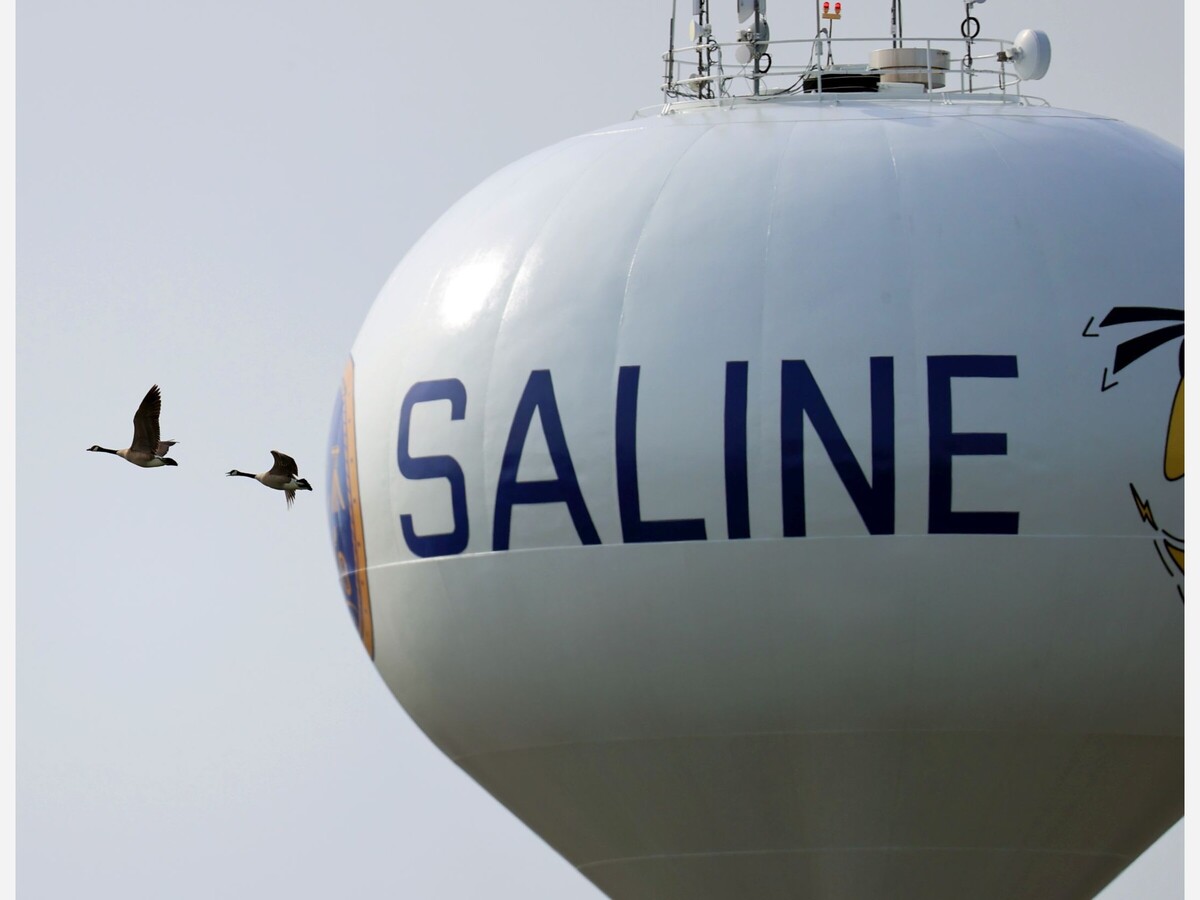Image


City of Saline residents beset by hard water and rusty water should soon see an improvement in the quality of their tap water, officials said during a townhall meeting at city hall Tuesday.
City Manager Colleen O’Toole presented information about the water system, recent projects and quality issues during the 40-minute meeting. DPW Director Larry Sirls and water/wastewater superintendent Bill Briggs joined O’Toole in answering questions after O’Toole’s presentation.
O’Toole said the city has experienced an increase in harder water and discolored water over the last four weeks. Two projects have caused the issue. A third issue is contributing to the problem.
In 2022, one of the five wells that provide water for the treatment plan, Well 4, failed. The city is waiting for state approval to bring its new well, Well 7, online. With fewer wells pumping water into the system, the city hasn’t had the capacity to regularly flush the system and remove hydrants. Regular flushing is seen as an important remedy for discolored water.
One of the projects causing hard water is the city’s rehabilitation of the sand media filters. The city’s three greensand filters remove iron and manganese from the water before it’s pumped into the water plant. One of the filters has been replaced. A second filter should be replaced in the next three weeks. The third unit will be replaced before the end of the year, O’Toole said.
The second project contributing to the hard water issue is a broken component on the reverse osmosis system at the plant. After the water is filtered, it goes through the reverse osmosis to remove hardness. When the system went down due to a failed component, the process was bypassed, so the water produced was much harder than normal. O’Toole said the city has begun working 12-hour days at the water plant and manually operating the reverse osmosis system.
“This has resulted in immediate improvement, which should start to show itself in the water system,” O’Toole said.
Water tested in the plant is not as hard. O’Toole expects tests in the system to start showing similar results.
Once the second sand filter is online, the DPW will expand flushing efforts - with emphasis on the hot spots. O’Toole emphasized the importance of using the city’s Citizen Reporting Tool, located on the city’s website, to help the city understand current and long-term hotspots.
O’Toole said the city tests daily in the plant for hardness, iron, PH, phosphorus, chlorine and fluoride, A dozen times a month, the city rests for bacteria and residual fluoride in the system. Four times a month, the city tests for PH, alkalinity, sulfates, chloride and orthophosphates. The city also tests for things like lead.
“I am happy to share that the city does produce water that is well within the safety parameters,” O’Toole said.
Residents had questions and concerns. One resident held up a jug of dark brown water and asked why some residents have this problem and others don’t.
DPW Director Sirl said it likely has to do with the hydraulic grade.
“The sediments (in the water) stay on the lower end,” Sirls said, adding that the DPW tries to flush the system’s dead ends, also a hot spot for sediments, as much as it can.
“If Well 4 hadn’t gone down, we would have been flushing more often. Once the new well is online, we’ll have the supply for more routine flushing,” Sirls said.
At one point, after Briggs said the water wasn’t corrosive or unsafe, a resident with concerns about the safety of the water challenged city staff to drink it. O’Toole replied the water they were drinking at the dais was from the city’s system.
Many residents complained of a lack of communication about the issues to the public. O’Toole said the city can only control its own channels (Facebook, Youtube) and that its newsletter is only quarterly. Some residents said they aren’t on social media or don’t have smartphones with apps.
O’Toole said the city issues press releases to local newspapers but cannot control whether they are printed.
However, the recent press release for the Nov. 14 townhall, for example, was not issued until Nov. 9. That was too late for The Saline Post or Sun Times to publish before the meeting.
Even now, the city has not released any press releases to The Saline Post explicitly explaining any of these water quality issues.
Nor has it used its 411 text service to explain the water quality issue to subscribers of that service.
(The city has been encouraged since 2012 to create an account on www.thesalinepost.com and post free and timely news, events and information and has not done so.)
One of the notable comments in the meeting came from Superintendent Briggs after the staff was asked if the city has considered alternate water sources.
While Briggs said the city is confident in the city’s aquifer and water system, he admitted the city has talked about alternatives - including accessing Great Lakes Water Authority from the Ypsilanti Community Utilities Authority. YCUA service extends through Pittsfield township and ends at the City of Saline.
“We’ve talked about it. It’s one of those things you have to approach carefully because we’ve got money invested in what we’ve got going. To get water from YCUA, it’s going to cause another investment, equipment to transmit it, plus there’s always the political aspect - how well they work with us,” Briggs said.